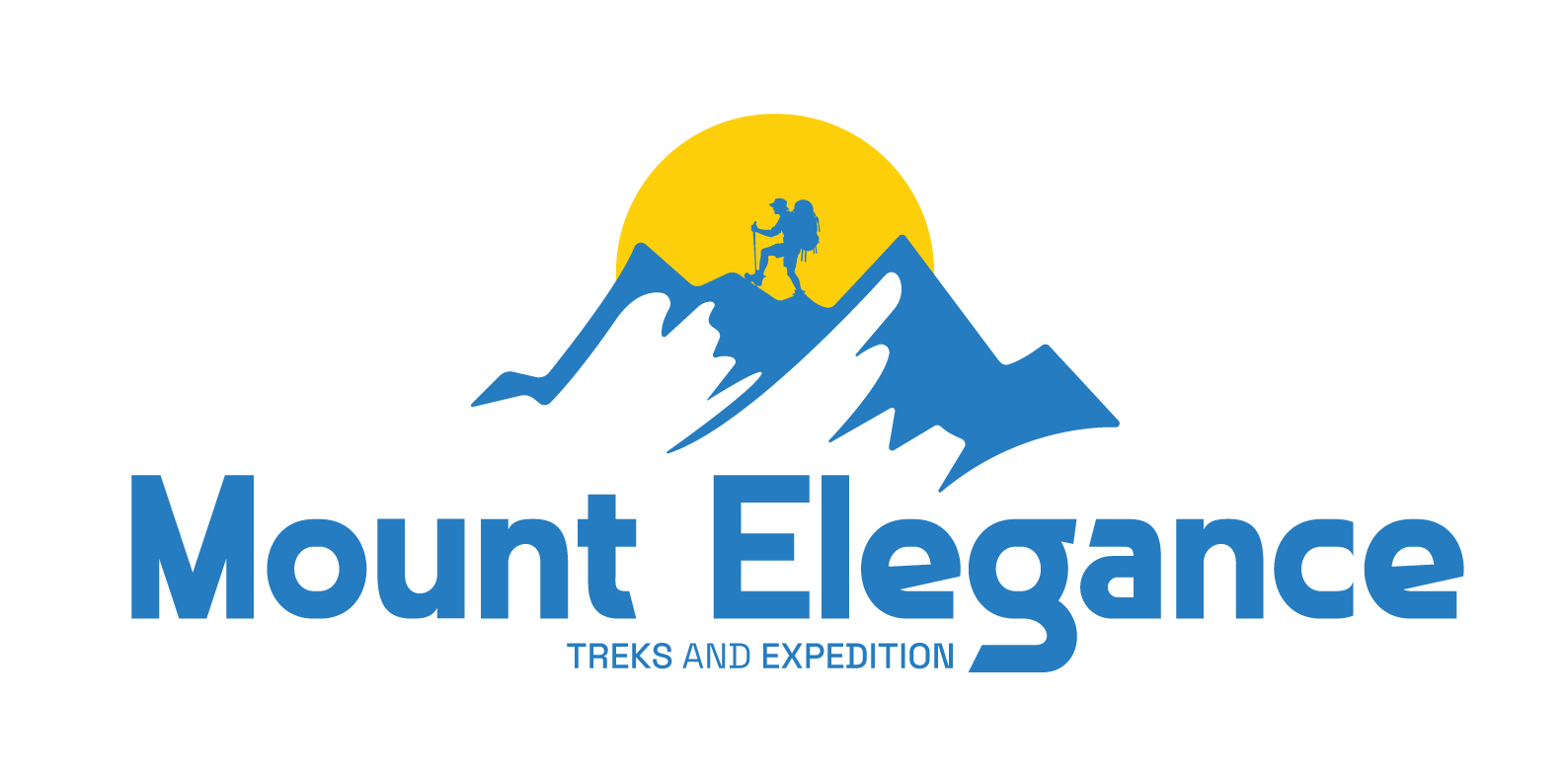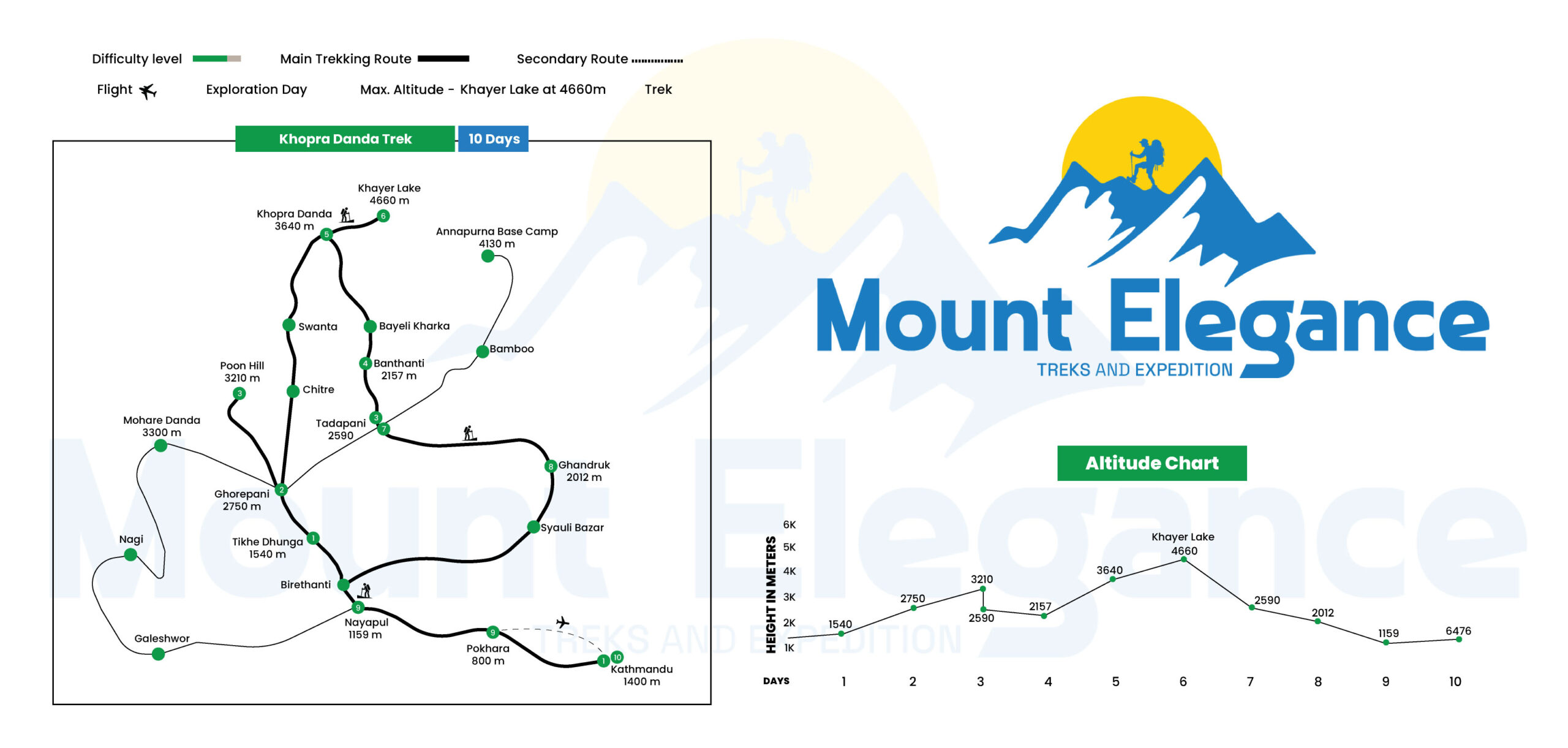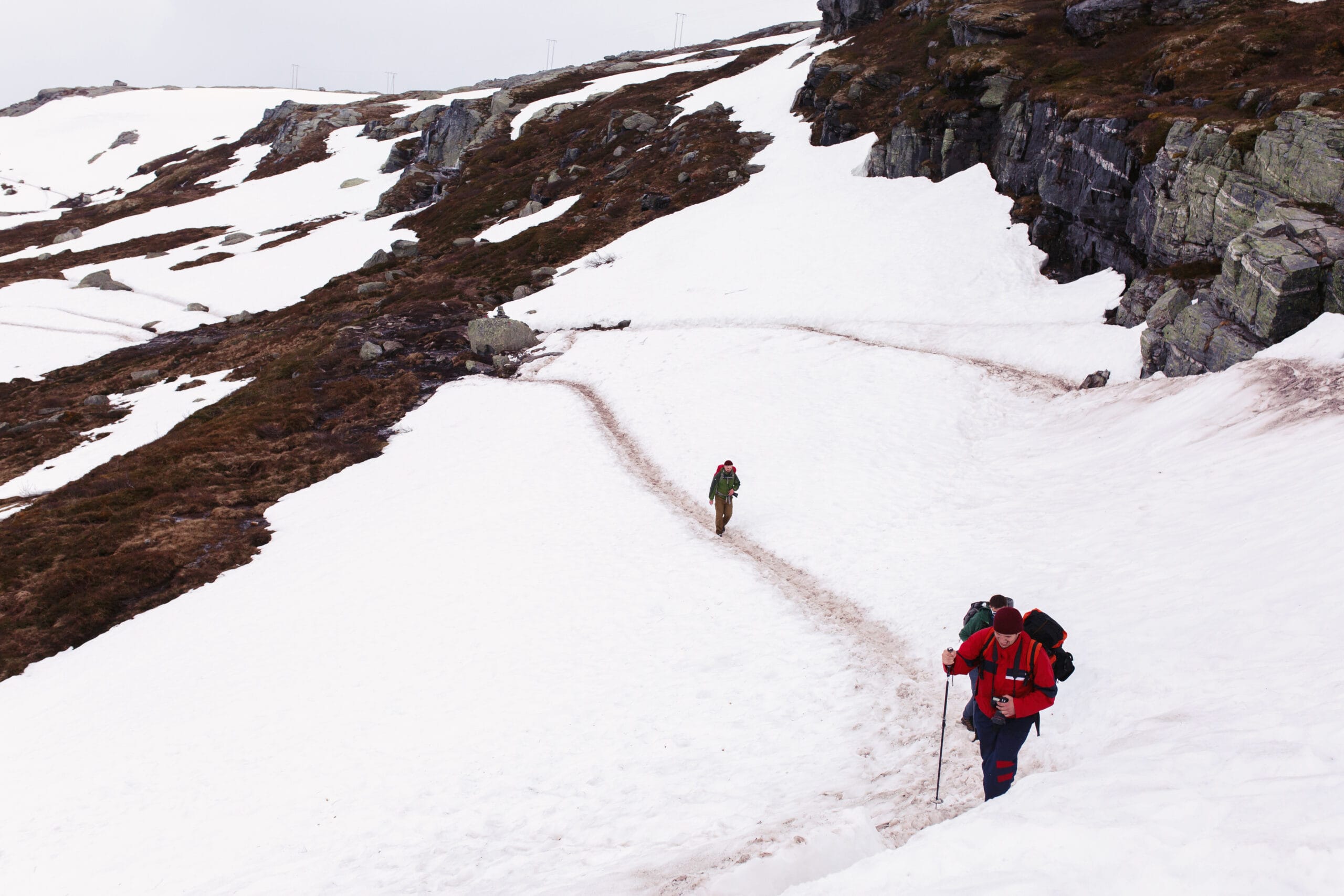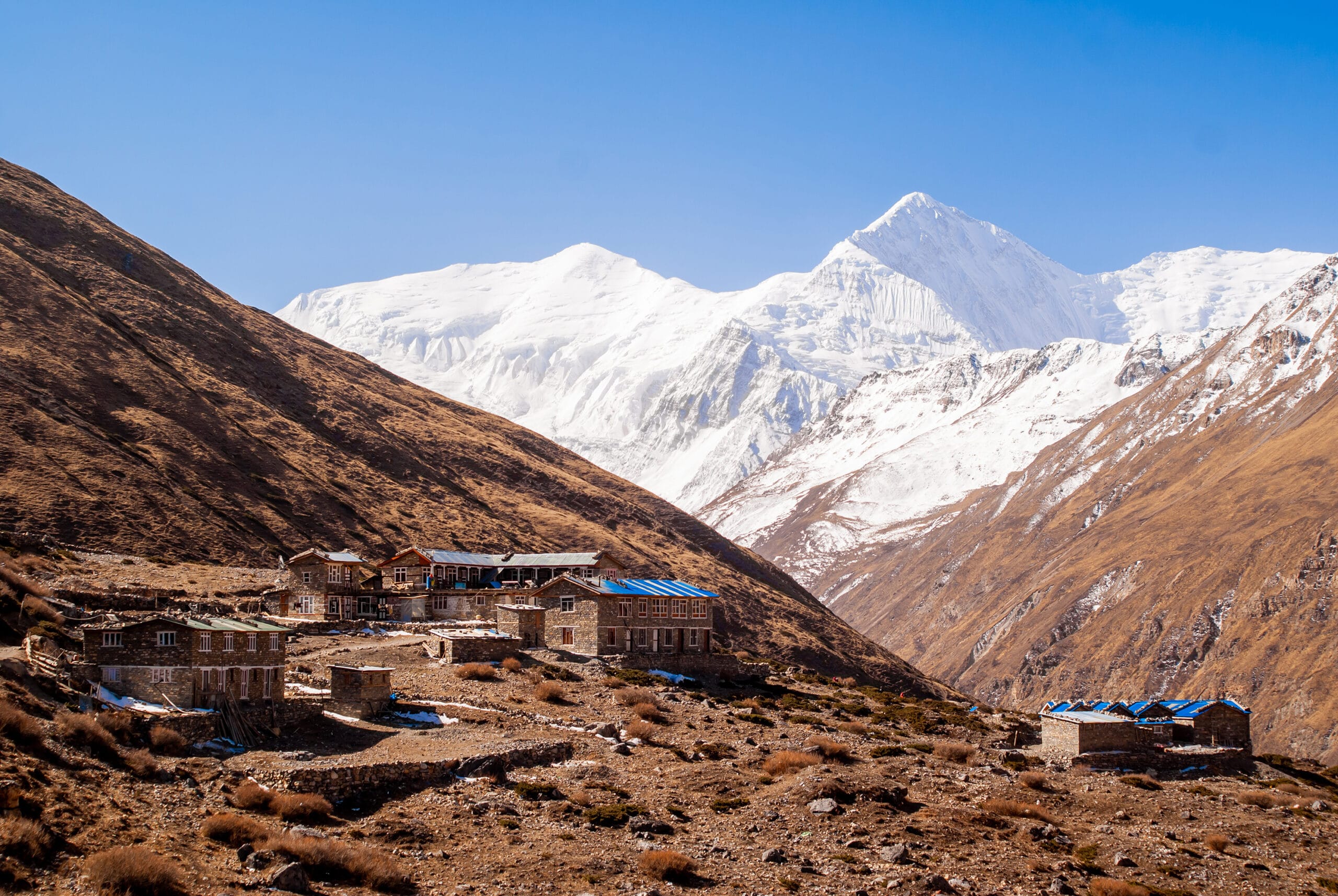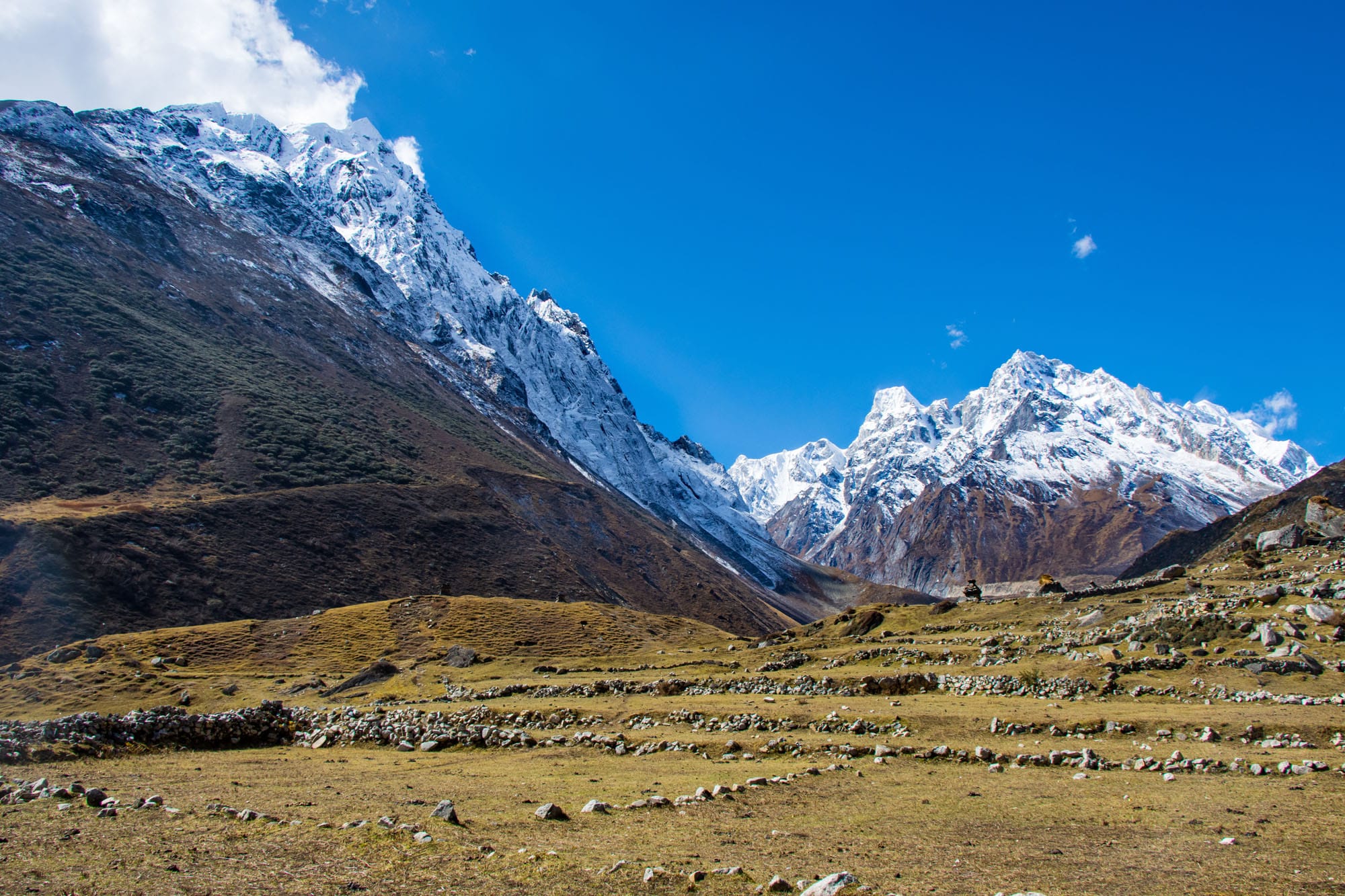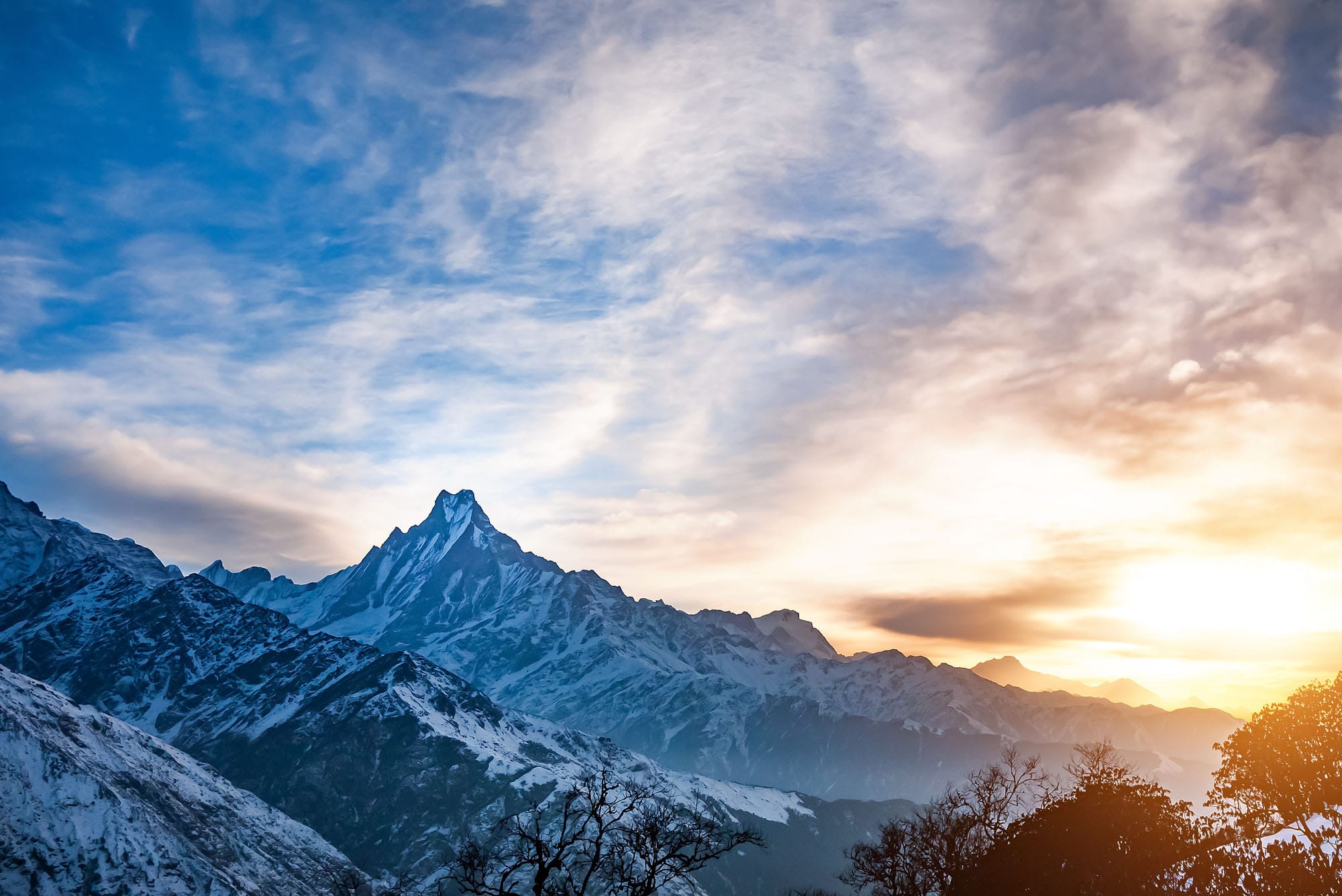Khopra Danda Trek – 10 D
Best Season
Highest Altitude
Trip Overview
Khopra Danda Trek – 10 days also known as the Khapre Ridge Trek, is a hidden gem in the Annapurna region that offers a perfect blend of solitude, scenic beauty, and authentic cultural experience. Unlike the more crowded trails of Ghorepani or Annapurna Base Camp, this off-the-beaten-path route takes you deep into rural Nepalese villages and landscapes.
The Khopra Danda Trek – 10 days in Nepal is an ideal choice for those seeking a quiet Himalayan trekking experience with panoramic views of the Annapurna and Dhaulagiri ranges. Unlike more crowded trails, this off-the-beaten-path trek offers a peaceful journey through remote Gurung and Magar villages, where trekkers can enjoy authentic cultural immersion and community-run teahouses.
Conclusion: A Trek for All Adventurers
In the end, the with Tilicho Lake stands as one of Nepal’s most well-rounded and rewarding trekking experiences. Whether you’re a seasoned high-altitude hiker or an adventurous soul seeking your first Himalayan challenge, this route has something to offer for everyone.
Trip Highlights of Khopra Danda Trek
The Khopra Danda Trek offers breathtaking views of Annapurna South, Dhaulagiri, and other Himalayan giants from a peaceful ridge far from the crowds.
This off-the-beaten-path route allows trekkers to enjoy a serene and less commercialized Himalayan experience.
An optional day hike to the sacred Khayer Lake provides both spiritual significance and stunning alpine scenery.
Trekkers can immerse themselves in the rich culture of Gurung and Magar communities while staying in locally run lodges.
The trail passes through diverse landscapes, including lush rhododendron forests, terraced hillsides, and high alpine meadows.
Essential Items:
- Base Layers: Thermal top and bottom
- Insulation: Fleece jacket and down jacket
- Outer Layer: Waterproof jacket and pants
- Trekking Clothes: Some pairs of trekking pants, quick-dry shirts
- Footwear: Trekking boots, camp shoes/sandals
- Headwear: Sun hat, warm hat, neck gaiter
- Hand-wear: Lightweight gloves, insulated gloves
- Accessories: Sunglasses, sunscreen, lip balm , headlamp with extra batteries , trekking poles ,50-60L backpack + daypack
- Personal Items: Hygiene essentials (toothbrush, toothpaste, wet wipes), Quick-dry towel ,Water bottle or hydration system (2L capacity), Snacks (energy bars, nuts)
- Medical Kit: Personal medications, basic first aid, altitude sickness pills
- Documents: Passport, trekking permits, travel insurance
- Optional: Camera, power bank, Lightweight sleeping bag
Refer to this for the full Equipment Checklist
Itinerary
- Drive Duration: 7–8 hours (Kathmandu to Nayapul)
- Trek Duration: 4–5 hours
- Meals: B/L/D
- Highest Altitude: 1,540 m / 5,052 ft
- Accommodation: Tea house / Lodge
The journey begins with a scenic drive from the bustling capital, Kathmandu, to Nayapul, passing through Trishuli River valleys, terraced farmlands, and charming towns like Pokhara. As you approach Nayapul, the landscape shifts from urban to rural, revealing the natural beauty of the lower Annapurna region. This transition sets the tone for the peaceful trekking days ahead.
- Trek Duration: 5–6 hours
- Meals: B/L/D
- Highest Altitude: 2,860 m / 9,383 ft
- Accommodation: Tea house / Lodge
Trek Duration: 5–6 hours
Meals: B/L/D
Highest Altitude: 2,850 m / 9,350 ft
Accommodation: Comfortable guesthouses with mountain views
The day starts with a challenging ascent via thousands of stone steps up to Ulleri, a large Magar village. As you climb higher, the forest thickens with rhododendrons and oaks, offering shaded paths and refreshing mountain air.
After hours of uphill trekking, you reach Ghorepani—a popular rest stop for trekkers, surrounded by panoramic mountain views. Lodges here are well-maintained, offering warm blankets, hearty food, and often, cozy dining areas with fireplaces to warm up during chilly evenings.
- Trek Duration: 1 hour (Poon Hill hike), 4–5 hours (trek)
- Meals: B/L/D
- Highest Altitude: 2,630 m / 8,628 ft
- Accommodation: Tea house / Lodge
You begin the day with a short climb to Deurali Pass, enjoying early morning mountain views of Annapurna and Dhaulagiri ranges. The trail then descends through lush rhododendron forests that are especially colorful in spring.
Tadapani is a small settlement nestled in the forest with simple lodges that provide stunning sunset views. Rooms here are basic but clean, and the dining halls are cozy spots to share meals with fellow trekkers under lantern-lit ceilings.
- Trek Duration: 5–6 hours
- Meals: B/L/D
- Highest Altitude: 3,070 m / 10,072 ft
- Accommodation: Tea house / Lodge
Leaving the busier trails behind, today's route ventures into quieter terrain as you gradually ascend through dense forests and pasturelands. The serenity and natural beauty of this section offer a deeper sense of wilderness.
Chistibung is a small, less-developed stopover with a couple of basic lodges offering humble amenities. The tranquility of this place, paired with distant views of the ridges and clouds drifting below, makes it an excellent spot to unwind.
- Trek Duration: 5–6 hours
- Meals: B/L/D
- Highest Altitude: 3,670 m / 12,040 ft
- Accommodation: Tea house / Lodge
Today’s trail is the most rewarding, with sweeping views of Dhaulagiri and the surrounding snow-capped peaks. You gain significant elevation as the landscape turns alpine, revealing the high ridgeline of Khopra Danda.
Lodges at Khopra are perched right along the ridge and offer some of the best sunrise and sunset views in the Annapurna region. Rooms are basic but clean, and you’ll dine while gazing at mountains stretching across the horizon.
- Trek Duration: 5–7 hours (optional hike)
- Meals: B/L/D
- Highest Altitude: 4,660 m / 15,288 ft (Khayer Lake)
- Accommodation: Tea house / Lodge (Khopra Danda)
This rest day allows for short explorations around Khopra Ridge or a challenging side trip to Khayer Lake (optional). The lake trek takes you further into wilderness with dramatic views and spiritual significance.
Remaining at Khopra, you can relax in the lodge, read, sip tea, or photograph the mesmerizing cloud formations and golden peaks. It's a day to pause and reflect on the natural beauty and sense of peace found at altitude.
- Trek Duration: 5–6 hours
- Meals: B/L/D
- Highest Altitude: 2,630 m / 8,628 ft
- Accommodation: Tea house / Lodge
The descent begins as you make your way to Swanta through rhododendron forests and alpine meadows. This trail is less traveled, offering peace and intimate encounters with the flora and fauna of the mid-hills.
Swanta is a picturesque village with terraced farms and friendly locals. Teahouses here are simple but welcoming, often operated by local families who serve delicious home-cooked dal bhat and share stories of village life.
- Trek Duration: 4–5 hours
- Meals: B/L/D
- Highest Altitude: 1,940 m / 6,365 ft
- Accommodation: Tea house / Lodge
The trail reconnects with the main route near Ghorepani before descending through forests and farmlands to Ghandruk. Ghandruk is a well-known Gurung village famous for its rich culture and traditional architecture.
Guesthouses here offer upgraded amenities including Wi-Fi, attached bathrooms, and excellent views of Machhapuchhre and Annapurna South. You can visit the local museum or simply stroll the stone-paved lanes.
- Trek Duration: 5–6 hours (trek), 1 hour (drive)
- Meals: B/L/D
- Highest Altitude: 1,070 m / 3,510 ft
- Accommodation: Hotel in Pokhara
Your final day begins with a pleasant downhill trek to Nayapul, passing rice paddies, suspension bridges, and charming villages. It’s a chance to reflect on the journey as you walk back toward civilization.
From Nayapul, a vehicle takes you back to Pokhara, where you’ll check into a hotel or lakeside guesthouse. After days on the trail, enjoy a hot shower, delicious food, and perhaps a celebratory drink beside the peaceful Phewa Lake.
- Drive Duration: 7-8 hours (drive)
- Meals: B/D
- Accommodation: Hotel in Kathmandu or onward travel
Today’s drive retraces your route along Prithvi Highway, following rivers, rolling hills, and rural towns all the way back to Kathmandu. It's a scenic but long journey, giving you plenty of time to absorb the memories of the trek.
Once you reach Kathmandu, you’ll have the rest of the evening to relax or explore the city’s bustling neighborhoods like Thamel. Enjoy a warm shower, a delicious dinner, and perhaps some last-minute shopping before your journey concludes. A farewell dinner with traditional Nepali cuisine is a great way to celebrate the successful completion of your trek which is hosted by mount elegance team.
Book Now
Send an Inquiry
Got A Question?

Mr. Shishir Dhakal
Price Inclusion
- Drive from Kathmandu - Nayapul. After Nayapul - pokhara - Kathmandu by bus/jeep.
- Accommodation in pokhara (3-star hotel) with breakfast after trek.
- Accommodation in teahouses during the trek.
- All meals (breakfast, lunch, and dinner) during the trek.
- Experienced English-speaking trekking guide.
- All government, Local taxes/ vat and official Expenses
- Seasonal fresh fruit as dessert every evening after dinner.
- Mount Elegance free Tshirt and Route map.
- Complimentary first aid box (Guide will carry during trekking).
- Oximeter to measure the Oxygen (For awareness of the high altitude sickness).
- Comprehensive travel insurance.
- Duffel bag and sleeping bag for trekking (Should be returned after trek completion).
- One porter for two trekkers.
- Farewell dinner at the end of the trek.
Price Exclusion
- International airfare to and from Kathmandu.
- Nepal entry visa fees.
- Accommodation in Kathmandu, before and after trek.
- Personal trekking equipment and gear.
- Tips for guides and porters.
- Extra expenses such as bar bills, laundry, and telephone charges.
- Travel insurance for personal loss, injury, or illness.
Additional Information
Trip Map
Meals and Accommodation
Each day, you’ll typically receive three meals — Breakfast, Lunch, and Dinner — usually prepared fresh at the tea houses or lodges along the trail. Meals often include traditional Nepali dishes like dal bhat (lentil soup with rice), vegetable curry, momo (dumplings), and noodles, as well as some western options like pasta or eggs. Vegetarian and special dietary needs can generally be accommodated with prior notice. Snacks and beverages (tea, coffee, hot chocolate) are widely available.
Accommodation is provided in tea houses and lodges, which are family-run guesthouses offering basic but comfortable rooms with shared bathrooms. Rooms usually have beds with blankets, and some higher-altitude lodges may provide hot showers for a small fee. Lodges offer warm hospitality, cozy dining areas, and rest spots with spectacular mountain views. Staying in these local lodges supports the communities along the trek.
Serene Woodland Paths to Tadapani
The trek to Tadapani unfolds along peaceful woodland paths, where towering rhododendron and oak trees create a cool, shaded canopy overhead. As you walk, the gentle rustling of leaves and the occasional chirping of birds provide a soothing soundtrack to your journey. The trail winds gracefully through the forest, offering glimpses of distant snow-capped peaks framed by vibrant greenery. This serene atmosphere invites quiet reflection and a deep connection with nature, making the approach to Tadapani both refreshing and rejuvenating.
Best Season for Trekking
Spring (March to May)
Spring is one of the most popular times to trek the Annapurna Camp to tilicho. The temperatures are moderate, the skies are usually clear, and the hillsides come alive with blooming rhododendrons and other wildflowers. This is also a great time for photography and experiencing the trail in full color.
Weather: Mild and stable with pleasant daytime temperatures
Views: Excellent visibility of Annapurna, Dhaulagiri, and surrounding peaks
Trail Conditions: Dry and safe; ideal for trekking
Temperature Range:
Lower elevations: 15°C to 25°C
Mid elevations: 10°C to 20°C
Higher elevations: 0°C to 10°C (day), down to -10°C at night
Autumn (September to November)
Autumn is considered the best season for trekking in Nepal. The monsoon rains have cleared the dust and humidity, leaving behind sharp mountain views and fresh air. The trails are lively with fellow trekkers, and local festivals like Dashain and Tihar add a vibrant cultural touch to your journey.
Weather: Cool, dry, and stable with bright sunny days
Views: Crystal-clear mountains and starry nights
Trail Conditions: Well-maintained and dry
Temperature Range:
Lower elevations: 15°C to 25°C
Mid elevations: 10°C to 20°C
Higher elevations: 0°C to 10°C (day), down to -10°C at night
Equipment checklist
Trekking in Nepal is an incredible adventure, taking you through diverse landscapes, from lush forests to rugged mountain trails. To fully enjoy the experience, it’s crucial to pack the right equipment. Here’s an essential checklist to help you prepare for your trek, ensuring you’re ready for the challenges and beauty of the Himalayas.
1. Clothing
Base Layers: Moisture-wicking base layers (thermal tops and bottoms) are essential for regulating your body temperature. Opt for lightweight, breathable materials.
Mid Layers: Fleece jackets or lightweight down jackets provide warmth in colder temperatures. These layers should be easy to add or remove as needed.
Outer Layers: A waterproof and windproof jacket is essential to protect against rain, wind, and snow. Make sure it’s breathable to stay comfortable during strenuous activities.
Trekking Pants: Lightweight, quick-drying pants are ideal. Consider packing thermal pants for colder regions or seasons.
Gloves, Hats, and Buffs: Warm gloves, a woolen hat, and a buff or neck gaiter help protect against the cold at high altitudes.
Trekking Socks: High-quality, moisture-wicking socks (at least three pairs) are crucial to prevent blisters and keep your feet dry.
2. Footwear
Trekking Boots: Sturdy, well-fitted, and waterproof trekking boots with good ankle support are essential. Break them in before your trek to avoid blisters.
Sandals or Camp Shoes: Lightweight sandals or camp shoes for relaxing at tea houses or lodges after a long day of trekking.
3. Backpack and Storage
Daypack (20-30 liters): A small, comfortable daypack with rain cover to carry essentials like water, snacks, camera, and extra layers.
Duffel Bag (60-80 liters): For your main gear, use a durable, waterproof duffel bag that will be carried by porters.
Dry Bags or Ziplock Bags: For protecting electronics, documents, and clothes from moisture.
4. Trekking Gear
Trekking Poles: Adjustable trekking poles reduce the strain on your knees, especially during steep descents.
Headlamp with Extra Batteries: Essential for early morning starts, late finishes, or use in lodges where electricity may be limited.
Water Bottles and Purification: Carry reusable water bottles and purification tablets or a water filter to ensure safe drinking water.
Sleeping Bag: A four-season sleeping bag rated for temperatures as low as -10°C to -15°C is recommended for high-altitude treks.
5. Health and First Aid
Personal First Aid Kit: Include essentials like band-aids, antiseptic wipes, blister treatment, pain relievers, and any personal medications.
Sunscreen and Lip Balm: High SPF sunscreen and lip balm are essential to protect against strong UV rays at high altitudes.
Hand Sanitizer and Wet Wipes: Useful for maintaining hygiene when water is limited.
Altitude Sickness Medication: Consult your doctor about medications like Diamox for preventing altitude sickness.
6. Personal Items and Extras
Snacks and Energy Bars: Pack lightweight, high-energy snacks for a quick boost on the trail.
Sunglasses with UV Protection: Essential for protecting your eyes from the intense sunlight and snow glare at high altitudes.
Camera or Smartphone: To capture the breathtaking scenery. Don’t forget extra batteries or a portable charger.
Personal Toiletries: Include biodegradable soap, toothbrush, toothpaste, and a small towel.
Cash: Carry enough local currency for expenses along the trail, as ATMs are not available in remote areas.
7. Documents
Passport and Visa: Carry your passport, visa, and photocopies in a waterproof pouch.
Permits: Obtain trekking permits such as the TIMS card and national park or conservation area permits, depending on your route.
Travel Insurance Details: Ensure you have comprehensive travel insurance covering high-altitude trekking, emergency evacuations, and medical expenses.
Final Tips
Pack Light: Try to keep your backpack under 10-15 kg. The lighter your pack, the more enjoyable your trek will be.
Layer Up: Layering is key for comfort in Nepal’s changing weather conditions. Bring versatile clothing that can be easily added or removed.
Double-Check Your Gear: Before you set off, double-check that you have all the essentials. Missing a crucial item could make your trek less comfortable or even dangerous.
Frequently Asked Questions(FAQs)
Are there pharmacies in trekking regions?
While there are some pharmacies and medical facilities in trekking regions, the availability of medications and medical supplies can be limited. Our team at Mount Elegance Treks and Expedition recommends that you pack essential medications and supplies before your trek, and to be prepared for any medical emergencies that may arise.
Pharmacy Availability:
Kathmandu and Pokhara: In these major cities, you can find a wide range of pharmacies and medical facilities that offer a variety of medications and supplies.
Trekking Regions: In trekking regions, pharmacies and medical facilities are limited, and may only carry basic medications and supplies.
Rural Areas: In rural areas, medical facilities and pharmacies may be non-existent, so it’s essential to be self-sufficient and prepared.
What to Expect:
Limited Medications: In trekking regions, you may not find all the medications you need, so it’s essential to pack essential medications and supplies.
Basic Medical Care: Medical facilities in trekking regions may only offer basic medical care, such as first aid and initial treatment.
Communication Challenges: Communication challenges may arise in remote areas, so it’s essential to have a reliable means of communication, such as a satellite phone or two-way radio.
Preparation is Key:
Pack Essential Medications: Pack essential medications and supplies, such as pain relievers, antibiotics, and antacids.
Bring a First Aid Kit: Bring a first aid kit with essentials, such as bandages, antiseptic wipes, and pain relievers.
Inform Your Guide or Leader: Inform your guide or leader about any medical conditions or concerns you may have.
What to Do in Case of a Medical Emergency:
Stay Calm: Stay calm and seek medical attention as soon as possible.
Contact Your Guide or Leader: Contact your guide or leader for assistance and guidance.
Seek Medical Attention: Seek medical attention at the nearest medical facility or hospital.
Our team at Mount Elegance Treks and Expedition is committed to providing you with a safe and healthy travel experience in Nepal. If you have any concerns about pharmacies or medical facilities in trekking regions, please don’t hesitate to ask.
What permits are required for Everest region treks?
To trek in the Everest region, you will need to obtain several permits, which are regulated by the Nepalese government. The main permits required are: the TIMS (Trekker’s Information Management System) card, the Sagarmatha Pollution Control Committee (SPCC) permit, and the Everest National Park entrance fee. We will assist you with the permit process, ensuring that all necessary documents are obtained and in order. Our team will also provide you with information on any additional permits or fees required for specific treks, such as the Everest Base Camp or Gokyo Lakes treks. Don’t worry about the paperwork
- we’ll take care of it, so you can focus on preparing for your amazing adventure in the Everest region!
How can I prevent altitude sickness?
Preventing altitude sickness is a top priority for us at Mount Elegance Treks and Expedition. To minimize the risk, we recommend gradual ascension, allowing your body to acclimatize to the higher elevations. This includes taking regular rest days, drinking plenty of water, and eating a balanced diet. Our expert guides will monitor your progress and adjust the itinerary as needed to ensure a safe and comfortable trek. Additionally, we recommend that you avoid strenuous activity at high elevations, drink plenty of fluids, and get plenty of rest. We also provide altitude sickness prevention medications, such as Diamox, which can be prescribed by your doctor. Our goal is to ensure that you trek safely and enjoy the stunning scenery of the Himalayas, while minimizing the risk of altitude sickness.
What kind of accommodation is available on the trek?
On our treks, you can expect a range of comfortable accommodations that cater to different budgets and preferences. In tea houses and lodges, you’ll find basic but clean and cozy rooms with shared or private bathrooms. In some areas, we also offer luxury lodges with modern amenities, such as hot showers and wifi. Our treks typically involve staying in tea houses and lodges, which are specifically designed for trekkers and offer stunning views of the surrounding landscape. We take care of booking and arranging accommodations in advance, so you can focus on enjoying the trek without worrying about a place to stay. Our goal is to provide you with a comfortable and relaxing experience, allowing you to recharge for the next day’s adventure.
Is vegetarian or vegan food available on the trek?
Absolutely! At Mount Elegance Treks and Expedition, we cater to a diverse range of dietary needs and preferences. Vegetarian and vegan options are widely available on the trek, and our guides will ensure that you have access to delicious and nutritious meals that suit your dietary requirements. Our tea house and lodge partners are accustomed to preparing vegetarian and vegan meals, and we can also arrange for special dietary requests in advance. From hearty dal bhat to fresh salads and fruits, you’ll find a variety of tasty options to keep you energized and satisfied throughout your trek. Just let us know about your dietary needs when you book your trip, and we’ll take care of the rest.
Do I need to bring a sleeping bag?
While a sleeping bag is not essential, it is recommended for the higher elevations and colder nights. The tea houses and lodges on the Everest Base Camp trek typically provide warm bedding, including blankets and duvets, but these may not be sufficient for very cold nights. If you tend to feel the cold or prefer a warmer sleep, bringing a sleeping bag is a good idea. If you don’t have a sleeping bag, you can also consider renting one from us or purchasing a warmliner to add extra insulation to the provided bedding. Our guides can provide more specific advice on what to bring based on the time of year and weather conditions. Either way, you’ll be sure to get a good night’s rest and be ready for the next day’s adventure.
Experiences That Last a Lifetime
Verified Fantastic Annapurna Base Camp Trek Everything was perfectly organized, down to the last detail. Everything ran smoothly and was very well planned. The care and company were absolutely lovely 🙂 it was amazing time. 9 days of trekking with breathtaking views, delicious food along the way, and amazing guides.On top of that, I ended up in the hospital because of appendicitis, and I was never alone — the organizers surrounded me with exceptional care. Thank you Shishir 🙏🏻Verified Very amazing. Very beautiful places. Breathtaking views and the guide @ Mr. Santosh, very nice and amazing talent.The food and culture was purely loss of words to us. Thank you.Verified Najpiękniejsze góry świata, cudowny magiczny czas. Wspaniale doświadczenie, doskonała organizacja, przemili przewodnicy i porterzy, zawsze gotowi pomóc i wesprzeć radą. Wyprawa którą na zawsze pozostanie w moim sercu.Doznania których nie sposób doświadczyć nie biorąc udziału w tej wyprawie. Z pewnością polecę udział w tej przygodzie moim przyjaciołom.Verified Annapurna circuit, Nar Poo trek, Mardi himal, etc This company manages the entire process very responsibly and leads the contract in detail, very kindly and reliably. Finally all costs are more reasonable than other companiesVerified Mr tourism "I had an incredible experience with Mouth elegance during my Mr. Tourism journey! Their professionalism, expert guidance, and warm hospitality made every trek seamless and unforgettable. Highly recommended for anyone looking to explore Nepal’s breathtaking landscapes!"Verified Annapurna Rounding/Punhill.abc Dream-like sea trip February 13 Annapurna Rounding/Punhill.abcTrekkingMeeting with the president and guide Ray at Tammel Hotel...Knowing everything about travel Thank you for moving forward...I was able to leave the trekking. Thank you.Without completing a journey of 20 days With the hard work of well-led Ray GaidenWe had a comfortable and enjoyable trip.Thank you for the careful care of the local travel agent.I wish to visit again next time.We wish the unlimited development of the travel company.Verified The most wonderful and satisying Trek with the best team b I had the most amazing trip. I had been to Poonhill trek ! Thanks to Mr Shishir Dhakal, and Mount Elegance, such a supportive guy ! Without your help, i may not have such good trip ! my best memory of life !
